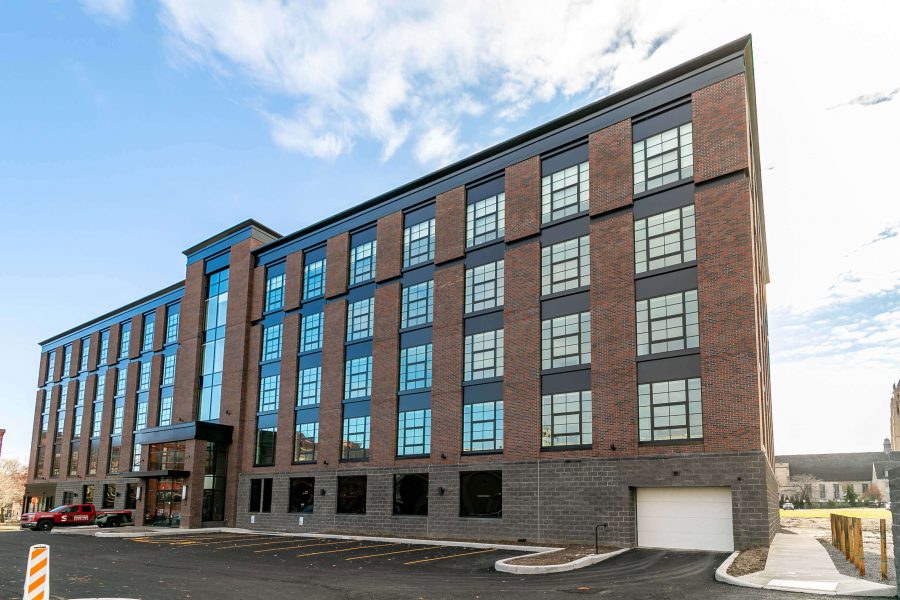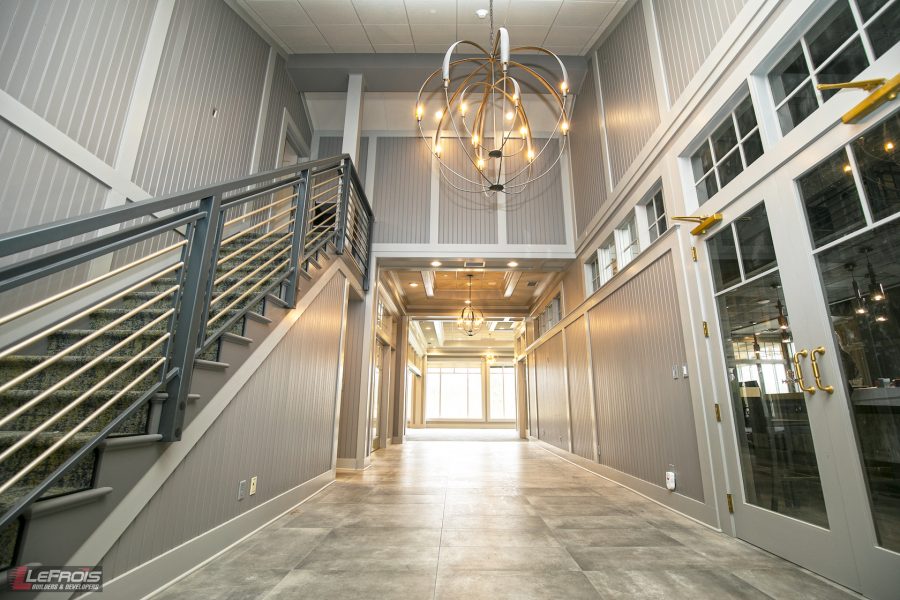Are you considering constructing a new building? You might feel overwhelmed as you try to think through everything that’s involved. And if you haven’t decided whether to remodel, expand, or build new it might be hard to see the big picture. As a commercial general contractor in Rochester, NY and Florida, we’ve partnered with many project owners to develop a variety of commercial real estate properties. In this article, we provide an overview of the commercial construction process from start to finish to help you see the big picture.
1. Planning & Development
Planning and development is the first phase in a construction project. This stage involves:
- Finding a property location
- Pre-designing the building/facility
- Introducing the architect and general contractor
2. Design/Build
When contractors join architects in the design phase, project cost is easier to estimate. If you go this route, you will gain information about current market price and be more able to make timely decisions. With open lines of communication between architects and contractors, your construction document package and detailing will be stronger. The design team must make sure that all designs meet building codes and regulations.
CONSTRUCTION BIDDING
The construction bidding process happens during the design phase. Every commercial construction project needs to include a construction bid; otherwise, it becomes difficult to determine total project cost. Construction bidding is also when construction companies are hired to serve as the main contractors of a project. The construction process tends to run much smoother if the whole team is involved in the development of the project.
PROGRAMMING
A building program allows you to get an idea of space, functional needs, and building flexibility. Programming is typically handled by an architect. After the programming phase, you will have a basic idea of the building size, number of rooms, who will use the space, and how the space will be used.
FEASIBILITY
The next step is the consideration of desired amenities and site requirements. Feasibility concerns like these need to address site access, building orientation, utility connections, and many other items. A great building can fail if important items such as size and location aren’t understood and implemented from the start.
SCHEMATIC DESIGN
Schematic designs allow you to consider how you want to visually represent your company. These designs include sketches of the materials, colors, sizes, shapes, textures, and patterns of your building project.
DESIGN DEVELOPMENT
Design development refers to the investigation and research of equipment and materials needed for construction and how much they cost.
CONTRACT DOCUMENTS / WORKING DRAWINGS
The final specs and complete set of drawings are included in what is known as contract documents or working drawings. Contractors use these to assess their bid. Builders use them for the construction process. The contract establishes timelines and costs for each stage of the construction project. These documents guide contractors and vendors away from cost increases throughout the building process.
3. Pre-Construction
During the pre-construction phase, lists of materials are prepared and sent to various vendors and contractors to request quotes. In order to choose the best-fit vendor or contractor, at least 3 quotes are gathered to set a budget analysis. Another step in this phase is to obtain all necessary building permits and insurance requirements.
The pre-construction phase starts once project owners notify their selected general contractor to proceed. The contractor then assigns roles that form a project team. These roles include:
- Project Manager: Point-person for the project team.
- Superintendent: Coordinates on-site construction activities and maintains time schedules (including deliveries of equipment and materials).
- Contract Administrator: Helps project manager and superintendent with contract details.
- Field Engineer: Manages important paperwork. During pre-construction, field engineers investigate the site to determine if any steps need to be taken prior to construction. They check to make sure that the site foundation and environment are in good building condition. They also ensure no historical artifacts could be threatened by the project.
4. Procurement
The items needed to complete the construction project (e.g., labor, equipment, materials) are purchased during the procurement phase. In keeping with the contract, an agreement is created between the owner and seller. The agreement is known as a purchase order. The purchase order ensures that purchased products meet required specs for the agreed price.
If your general contractor does all their own construction work, the company will be able to manage the procurement phase on their own. Otherwise, they might use subcontractors. Subcontractors specialize in one specific part of the construction work (e.g., concrete, woodwork, glass). As with the general contractor, subcontractors are hired during the bidding process.
5. Construction
The construction phase begins with a meeting organized by the superintendent. During this meeting, decisions are made in regards to work hours, material storage, site access, and quality control. Afterwards, a groundbreaking is conducted. Depending on the design and functionality, the order followed and materials used include site excavation, the installation of underground utilities, concrete pouring, steel erection, framing, roofing, exterior and interior work, etc. Each of these steps are inspected by the project manager and an official state construction inspector. This phase ends once construction is complete.
6. Post-Construction
Prior to occupancy, there are several steps that must be taken after the construction is complete. One of these steps includes completing a project punch list. This list includes final walkthrough items such as the need to change paint color or replace a broken floor tile. Once the punch list is complete, the occupancy phase begins. During occupancy, equipment and furnishings (e.g., furniture, desks, blinds) are installed or calibrated. If every requirement has been meet for the building, the architect will issue a certificate of substantial completion. This certificate represents the official completion of the project. Finally, the last inspection is done by the building official.
Ready to Start Building?
We hope this article has given you an accurate overview of what to expect in the commercial construction process. If you want to discuss how this process looks for your project, please contact us. We’ll get you in touch with the right people who will be able to talk budget, timeline, and construction feasibility for your project.
Related Posts

The Carnegie: New Mixed-Use Building in Rochester, NY

LeFrois Renovates Shadow Lake’s Clubhouse Into a Modern, Breathtaking Space

